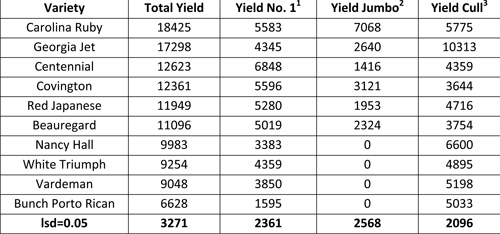Sweet potatoes move north
Sweet potato is a common crop in southern states, but they can be grown successfully in northern states like Michigan.
Sweet potatoes are a tropical vine, so when talking about United States production, thoughts turn to states like Louisiana, Mississippi and North Carolina. However, that doesn’t mean they can’t be grown in Michigan. During the 1960s and 1970s, there were over 1,000 acres in Berrien County.
Sweet potatoes are commonly called yams, however, they are neither potatoes nor yams but morning glory relatives. Standard potatoes are related to tomatoes and peppers and the edible portion is an underground stem called a tuber. The “eyes” are buds. Although the edible portion of the yam is a root like sweet potatoes, yams are more closely related to grass or lilies. The name confusion originated from the resemblance sweet potato roots have to yam roots.
The most common sweet potato has a copper colored interior and exterior and a moist flesh. Sweet potatoes come in a range of interior and exterior colors from white to purple. The purple pigment is heat stable so the result after cooking is an interesting purple product. Sweet potatoes also come in dry flesh-types similar to a standard russet baking potato. Desire for flesh type and color varies with ethnicity, so direct marketers need to be aware of ethnic populations in their marketing area and find out their sweet potato preference.
Sweet potatoes are best planted in slightly acidic (pH 6.0) sandy soils which allows for better root growth. They are planted from “slips” obtained from southern nurseries. Slips are vine segments containing two or more leaves and many are already sprouting roots. Soil has to be 65oF, which usually means a late May or early June planting date. If slips cannot be planted immediately, provide them with enough moisture and store them at room temperature – do not place them in a cooler. Cool temperatures after planting can result in spherical roots. Plant slips 12” apart in the row and 32” to 48” between rows. More northern areas should try planting through black plastic to help warm the soil and encourage quicker plant growth, resulting in higher yield as well as weed control.
Being outside typical production areas gives Michigan the advantage of not having many sweet potato diseases and only a few insects. Some diseases and nematodes can be transmitted with slips, so be sure to get them from a reputable nursery. Wireworms can be a problem in some locations, especially if a wireworm susceptible crop was planted in the same location the year before. The biggest problem is weeds, but if they can be controlled early through cultivation or herbicides, the sweet potato plant will grow vigorously and quickly cover the ground to shade out all but the most aggressive weeds. Deer and mice also can be problems since they eat the roots.
In Michigan’s climate, sweet potatoes only need about 80 pounds per acre nitrogen and 150 pounds per acre potash. Nitrogen should be applied in split applications with 30 pounds as a pre-plant and the rest applied just prior to the vines running. If planted through black plastic with drip irrigation, fertilizer can be injected through the drip system starting two weeks after planting and continuing through early September.
Harvest is weather dependent but will usually be late September. Vines should not be allowed to receive killing freezing temperatures as that may impart an off flavor to the roots. Prior to harvest, vines should be mowed off and roots dug and graded. Number one roots are between 3” and 9” long with a diameter between 1.75” and 3.5”. Larger and smaller roots are still edible and can be sold as small, large or jumbos.
Several varieties have been tested under Michigan conditions with Carolina Ruby, Centennial and Covington having good performance (Table 1). Georgia Jet has good yield, but has a high number of cracked roots.
Table 1. Yield of 10 sweet potato cultivars in pounds per acre at the Southwest Michigan Research and Extension Center, Benton Harbor, Michigan, in 2008. Plant density was 7920 plants per acre.
1Roots 3” to 9” in length and 1.75” to 3.5” in diameter
2Roots larger than 9” in length and 3.5” in diameter
3Cracked and small roots



 Print
Print Email
Email




